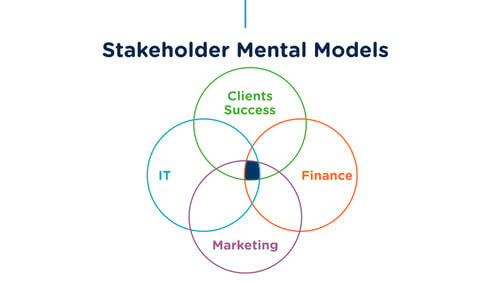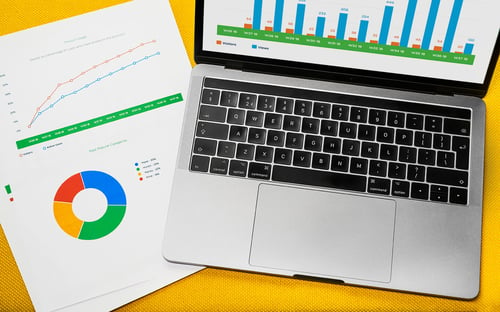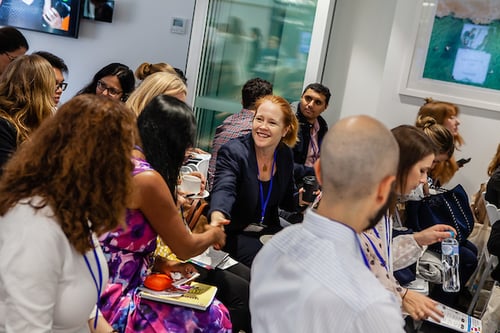5 min read
New research indicates that three-quarters of employees want a more tailored benefits offering. That's why leading HR innovators are leveraging technology to expand and improve their benefits offering to give employees what they really want.
But what often stops people from implementing a world-class benefits programme? The elusive tick of approval.
After supporting over 1,800 companies in delivering an exceptional employee engagement experience to almost 5 million users, we’ve learnt a thing or two about pitching the idea of a new employee benefits programme, and getting even the most sceptical leaders to sign the dotted line.
Here are six things to consider on your way:
1. Engage them early
Depending on the familiarity your leadership team has about employee engagement and the importance of benefits in your employee value proposition, you’ll likely need to invest extra time in educating your stakeholders. It’s critical to get your stakeholders engaged with the process early, understand their priorities and solicit their feedback. Doing your homework early will enable you to overcome obstacles, and ultimately set you up for success when it comes time to pitch.
Whether you're choosing a new engagement solution, an L&D system or new onboarding tools, mobilising ambassadors for your programme early in the process is critical to your success. The more people you get onside, the more momentum you will build.

2. Start with WHY
You should be able to answer the questions: Why now, why this initiative and why is it so important to our organisation’s success?
A common thread across many of my peers is the need to evolve quickly to gain an edge when it comes to attracting and retaining talent. There is a lot of competitiveness, especially in the tech industry, and many organisations are vying for the best people. So employers are looking for ways to stand out and improve their Employee Value Proposition.
For instance, one of our clients Accenture, a global consulting firm, knew that offering a variety of rewards and benefits was a core part of its attraction and retention strategy. However, the team needed to change their approach to meet changing employee expectations and the "always on, always connected" attitude of the digital era.
Accenture knew providing its people choice and a wide range of personally relevant and easily accessible benefits was key, and considered the typical employee’s consumer habits and expectations in the digital age when designing their range.
3. Put yourself in their shoes
Today, HR professionals require buy-in from an average of 5.7 stakeholders – often this includes leaders in the finance, IT and even marketing teams. The challenge is that with every additional stakeholder that needs to sign off on your business case, the likelihood of approval drops significantly.

While it’s still important to meet with each stakeholder, rather than building a business case that targets their individual’s objectives, it’s more effective to focus on how your employee engagement efforts will address and benefit the areas where the interests of your stakeholders overlap.
To gain buy-in and encourage long-term, impactful culture change with your programme, spend time looking for common ground and focus your attention on where your stakeholders can agree on a common vision, purpose and advantage.

4. Leverage the right data
The most successful business cases always include the high-level facts around the return on investment (ROI) of your benefits investment – tangible measures like sales and revenue. It also means talking about the value on investment (VOI) – intangibles like employee anecdotes about usage.
Every investment comes with a cost, but if you can prove a high return on that cost, your proposal’s value becomes much more attractive.
Consider flexible working and giving employees the ability to work from home. One of my colleagues shared how it takes her 90 minutes to travel to the office, which means Reward Gateway’s flexible work benefit saves her three hours a day (or nine hours a week if she chooses to work 3 days at home). Saving travel time has a huge impact on the mental and physical wellbeing of millions of workers who work flexibly, and it means they’re more effective when they start their work day.
When it comes to financial return, if you’re paying X amount per head to access an employee discounts system, but that puts hundreds or thousands of dollars back in your employees’ pocket every year, that’s a huge ROI. If employees’ families use those discounts, you’re also promoting your employer brand, which offers significant VOI.
5. Master your timing
Keeping a finger on the pulse of what the current climate of your leadership team is (what they’re dealing with, and when) will clue you into when’s the right time to present your proposal.
Is there a seasonal opportunity you can leverage to maximise the impact for your employees?
I know a number of organisations who’ve opted to launch an employee benefits program at Christmas because that’s usually a time of year that causes significant financial strain. Or sometimes they start the new year off with a fun and exciting launch and then continue to promote it as something employees can take advantage of all year around.

6. Don’t be an island
First, find ways to integrate what you are proposing into other business or HR initiatives and consider how your initiative will support or align with other key initiatives. This not only helps you create a more compelling story, but your business leaders will respect you for this.
Second, connect with other HR leaders who are experiencing success in this space and leverage their knowledge and experience. One of the things I really enjoy about working with an organisation like Reward Gateway is that the Client Success Team is really generous about sharing ideas that will help organisations succeed in improving the take-up of their existing programmes - we share those best-practice tips and inspiration on our Reward Gateway blog, along with advice for how to evolve and refine what employers are offering to keep their people engaged in the long-term.
It’s also one of the reasons why we run our Engagement Excellence Live event series - it’s really to bring people together and show them they aren’t alone. We want to build a community and also give you examples to take back to your organisation to help bolster your business case and project plan.
Remember, you are not the first HR Leader to pitch what seems like a crazy idea to improve your employee experience, and you won't be the last!
Stay determined, informed, consultative and put yourself in your leaders' shoes, and you'll know exactly how to bring a strong proposal to the table. And importantly, you'll get the sign of approval you need to get it across the line.
Need some one-on-one support in building your business case for investing in your employee engagement initiative? Get in touch with our team!

 Robert Hicks
Robert Hicks


